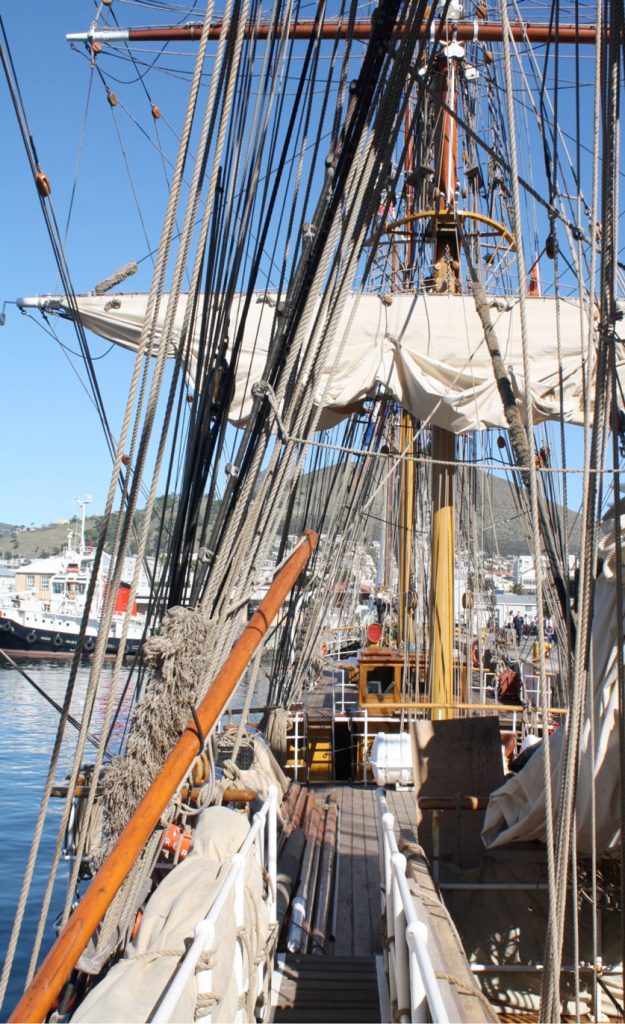Before the invention of the steam engine, ships were powered by the wind. This meant that they were dependent on the wind and on ocean currents. Voyages took a long time and were not direct from one port to another as the ship’s route followed the wind belts. An example of this is the route that was followed regularly by sailing ships going from Europe to India or to what is present-day Indonesia. (See the map below.) On occasions, the sailing ships were becalmed in windless areas known as the doldrums, often found in the tropics.

Because of unfavourable wind directions, the South African sailing ship Lawhill once took 26 days to sail from Cape Town to Durban, a voyage that a modern, fast containership can do in 36 hours!
The map shows the generalised outward and homeward routes for sailing ships moving between Europe and Asia during the days when Portuguese, Dutch and British sailing ships made frequent voyages to India or to the East Indies (now known as Malaysia and Indonesia). The navigators of the time discovered the wind belts that the ships used to their advantage. Currents such as the Canary Current (flowing towards the south-west off the north African coast), the Brazilian Current (flowing south-westwards off the coast of Brazil), the Mozambique/Agulhas Current flowing south-westwards off the southern African coast) and the North Atlantic Drift (flowing from the Caribbean towards Europe) also helped the sailing ships. Portuguese mariners stopped along the north-east coast of Brazil and along the Mozambique coast to fill water caskets and to find food. For this reason, Portuguese settlements in these areas grew. Mozambique became a Portuguese colony until 1975, and Brazil is the only Portuguese-speaking country in South America. It is also the largest Portuguese-speaking population in the world, including Portugal! (After N.C. Pollock and S. Agnew : An Historical Geography of South Africa.)

The four-masted South African barque Lawhill. She was one of the world’s last commercially-operated sailing vessels until she was laid up in 1947. Photograph : Lawhill Collection
As sailingships were generally slow, they were replaced initially by steamships and thereafter by motorships. By 1950, there were no commercially-operated sailingships. Those that are still in operation – and are on view especially at special maritime events – are operated by various navies as training ships or operated by special organisations to preserve such vessels that are known now as “tallships”.

Aboard the Dutch “tall ship” Europa. She is a steel-hulled Dutch barque. She was built in 1911 and operated as a lightship on the Elbe River in Germany, but was bought in 1985 and in 1994, she was refitted as a barque, a three-mast rigged vessel. She is used for training and offers passages to people who enjoy life aboard a sailing ship. Note the rigging of the vessel and the yards (the horizontal booms) onto which the sails are fitted. Photograph : Brian Ingpen


